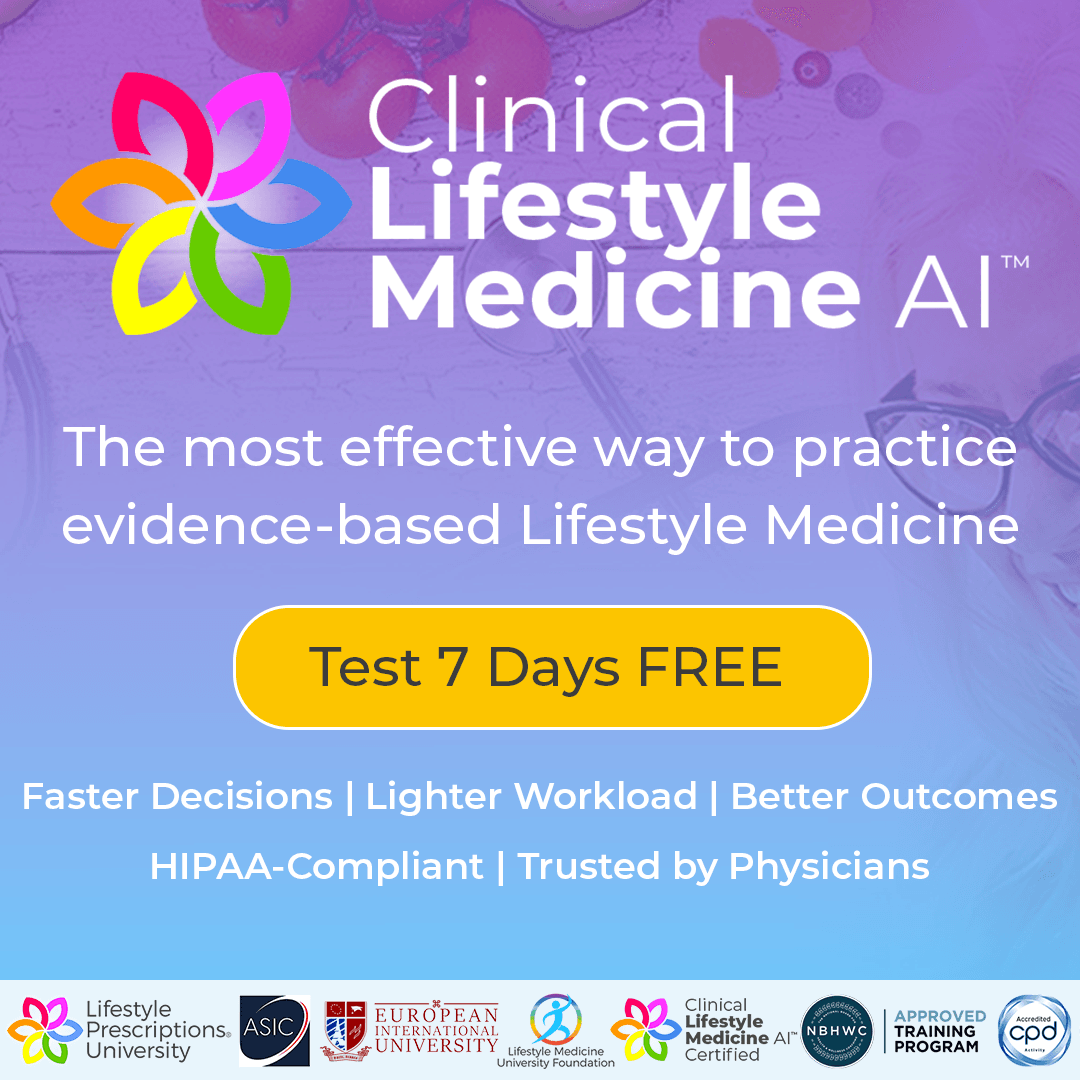Ozempic vs. Lifestyle Medicine: Evaluating Approaches to Obesity and Diabetes Management
The escalating prevalence of obesity and type 2 diabetes has prompted the exploration of various treatment modalities. Among these, pharmacological interventions like Ozempic (semaglutide) and evidence-based lifestyle medicine protocols have garnered significant attention. This article aims to compare these approaches, examining their efficacy, costs, side effects, and overall impact on patient health outcomes.
Understanding Ozempic
Ozempic is a glucagon-like peptide-1 (GLP-1) receptor agonist approved for the management of type 2 diabetes. It functions by enhancing insulin secretion, suppressing glucagon release, and slowing gastric emptying, thereby aiding in blood glucose regulation and promoting weight loss.
Efficacy of Ozempic
Clinical trials have demonstrated that Ozempic effectively lowers HbA1c levels and supports weight reduction. A study published in The Lancet reported that patients receiving semaglutide experienced significant weight loss compared to those on placebo. However, the sustainability of these outcomes post-treatment remains uncertain.
Cost Considerations
The financial implications of Ozempic are substantial. In the United States, the list price for a one-month supply is approximately $968.52. Over a lifetime, this equates to significant expenditure, raising concerns about accessibility and long-term affordability for patients.
Side Effects and Risks
While Ozempic is effective, it is associated with several side effects, including:
Gastrointestinal Issues: Nausea, vomiting, diarrhea, and constipation are common, particularly during the initial stages of treatment.
Pancreatitis: There have been reports of acute pancreatitis in patients using GLP-1 receptor agonists.
Thyroid C-Cell Tumors: Animal studies have indicated an increased risk of thyroid tumors with semaglutide use, though the relevance to humans is not fully established.
Lifestyle Medicine: A Comprehensive Approach
Lifestyle medicine emphasizes the modification of daily habits and behaviors to prevent, treat, and often reverse chronic diseases. The six core pillars include:
Nutrition: Adopting a predominantly whole-food, plant-based diet rich in fruits, vegetables, whole grains, and legumes.
Physical Activity: Engaging in regular exercise, such as brisk walking, cycling, or resistance training.
Stress Management: Implementing techniques like mindfulness, meditation, and yoga to reduce stress levels.
Sleep Health: Ensuring adequate and quality sleep to support overall health.
Social Connections: Fostering healthy relationships and community engagement.
Avoidance of Harmful Substances: Eliminating the use of tobacco, excessive alcohol, and other detrimental substances.
Efficacy of Lifestyle Medicine
Evidence supports the effectiveness of lifestyle interventions in managing and preventing obesity and type 2 diabetes. A study in The American Journal of Medicine highlighted that lifestyle modifications led to significant improvements in glycemic control and cardiovascular risk factors. Moreover, these interventions have been associated with weight loss and reduced medication dependency.
Cost-Effectiveness
Lifestyle medicine interventions are generally low-cost, focusing on behavioral changes rather than expensive treatments. Investing in training healthcare providers in lifestyle medicine and health coaching can enhance patient outcomes and reduce overall healthcare expenditures. Redirecting funds from costly pharmacological treatments to lifestyle interventions could provide a more sustainable and equitable approach to chronic disease management.
Side Effects and Benefits
Unlike pharmacological treatments, lifestyle medicine interventions typically have positive side effects, including:
Improved Mental Health: Regular physical activity and social engagement can alleviate symptoms of depression and anxiety.
Enhanced Quality of Life: Better nutrition, sleep, and stress management contribute to overall well-being.
Reduced Risk of Comorbidities: Healthy lifestyle choices lower the risk of developing other chronic conditions, such as cardiovascular diseases.
Integrating Approaches for Optimal Outcomes
While Ozempic may be appropriate for a subset of patients requiring rapid weight loss or immediate glycemic control, lifestyle medicine offers a foundational approach applicable to the majority of individuals with obesity, diabetes, or pre-diabetes. Combining pharmacological treatments with lifestyle interventions can enhance efficacy and promote long-term health benefits.
The Chronic Disease Epidemic and Public Health Solutions
Lifestyle Medicine offers a transformative solution to the chronic disease epidemic by addressing the root causes rather than just managing symptoms. In a healthcare system burdened by skyrocketing costs and limited access, Lifestyle Medicine presents a cost-effective and accessible alternative that can prevent, reduce, and even reverse chronic diseases — not just obesity and diabetes, but also heart disease, cancer, autoimmune disorders, and mental health conditions.
Cost-Effectiveness
Chronic diseases account for 90% of healthcare spending in the United States. Medications like Ozempic, which cost around $1,000 per month, manage symptoms, creating a lifetime dependency for many patients. In contrast, Lifestyle Medicine interventions — such as improved nutrition, physical activity, stress management, and sleep — are inherently low-cost or free. By investing in Lifestyle Medicine education and programs, we could save billions annually while empowering patients to take control of their health.
Accessibility
Pharmacological treatments often remain out of reach for uninsured or low-income populations, exacerbating health disparities. Lifestyle Medicine bridges this gap by emphasizing practical, scalable interventions that can be implemented in schools, workplaces, and communities. Initiatives like group health coaching or subsidized farmers’ markets bring prevention and care directly to underserved populations.
A Holistic, Preventive Approach
Medications primarily target symptoms, leaving the underlying causes of disease unaddressed. Lifestyle Medicine, however, empowers individuals to adopt sustainable habits that promote long-term health. For example, a whole-food, plant-based diet and regular exercise can lower HbA1c levels and blood pressure while reducing medication dependency.
Conclusion
The choice is clear: rather than perpetuating a reactive, symptom-focused system, public health must prioritize Lifestyle Medicine as the cornerstone of a preventive, equitable, and cost-effective healthcare model. By doing so, we can create a healthier society where chronic disease is the exception, not the rule.
References
The Lancet: Semaglutide and Weight Loss
The American Journal of Medicine: Lifestyle Medicine and Diabetes
NovoCare: Ozempic Pricing
Drugs.com: Ozempic Side Effects
Healthline: Ozempic Side Effects
American College of Lifestyle Medicine: Six Pillars of Lifestyle Medicine
Note: This article is for informational purposes only and does not constitute medical advice. Consult a healthcare professional for personalized recommendations.
© 2015-2026 Lifestyle Prescriptions® University. The terms Lifestyle Prescriptions®, Organ-Mind-Brain Anatomy™, Root-Cause Health Coaching™, and Clinical Lifestyle Medicine AI™ are worldwide trademarks of the Lifestyle Prescriptions® University and can only be used after completing qualifying training programs. Lifestyle Medicine WORKS™, Lifestyle Medicine Summit, HealthiWealthi™ are trademarks of Lifestyle Medicine University Foundation.
* This website and all LPU training programs are for educational purposes only. No medical diagnosis, therapy, or treatment is provided.





